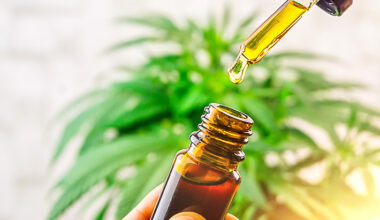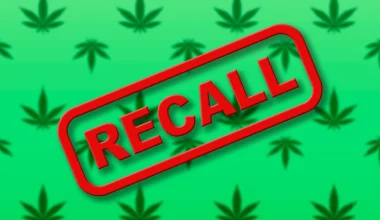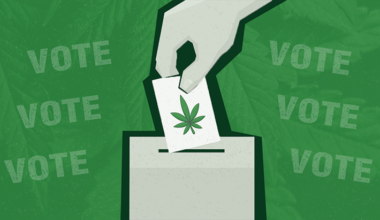Finding reliable hemp varieties that will produce the desired cannabinoid percentage and biomass volume, while also performing in the field and testing in compliance with federal THC limits, can feel like a tall order.
Here are some best practices for responsible selection of hemp genetics that can help save money — and potentially an entire hemp crop — at harvest.
Do the research
Don’t rely entirely on what the internet says will work for a certain climate or growing environment. Talk directly with plant breeders and learn about the varieties they produce.
Ask about:
- History of the genetics—where they were developed, the evolution of the development, cannabinoid content, germination rate, etc.
- Testing and treatment protocols for dealing with diseases and pathogens.
- Availability of a virus and pathogen indexing and clean stock program.
- Seed certification and feminization reports.
- Where seeds or cuttings/clones are produced — indoor, outdoor or in a greenhouse.
- Legal seed license and label for your state.
- Variety’s success in your region and micro-climate.
- Ability to provide multiple certificates of analysis, from multiple seasons and across several regions.
- Variety’s average yield per acre.
- Flower response time—will it work for your daylight sequence.
- Technical growing tips to increase yield and molecular concentration.
- Minimum order quantities.
- Price per seed, seedling, cutting or clone.
- Availability.
- Shipping methods and costs.
- Policies for holding orders because of weather or other issues.
Talk with veteran farmers in your area or region. Find out what varieties they have produced and what the results were. Ask about the benefits and drawbacks for different genetics and if they’re reordering or using different genetics or suppliers for this season and why.
Read, talk with university extension and industry consultants with a knowledge and research base in hemp production and get on LinkedIn to connect with hemp professionals. Reciprocate with what you’ve learned.
Reference state guidelines
Many markets have a certifying agency that provides a list of the varieties that farmers are allowed to use, as well as those that are on a watch list or banned from the state because of a tendency to test over legal THC limits.
If the genetics you want to source are not on the list for your state, talk with a representative from the agency to find out how to get those varieties approved or obtain an exception.
Some states do not restrict genetics, but it’s important to understand your market’s guidelines before you buy. If it doesn’t restrict, look at neighboring states or others in your region for guidance or warnings.
Seek certified varieties
The Association of Official Seed Certifying Agencies (AOSCA) establishes minimum standards for genetic purity and identity, recommends minimum standards for seed quality for classes of certified seed and coordinates the efforts of seed-certifying agencies.
Most current AOSCA-certified varieties originate outside the United States and are produced for seed, grain or fiber. Many U.S.-produced varieties have become qualified for AOSCA certification.
Hemp plant breeders can apply for AOSCA certification through the organization’s Variety Review Boards. Companies that don’t have AOSCA certification can access the organization’s labs to help verify their seed for customers, in compliance with the Federal Seed Act, and avoid costly lawsuits that come with mislabeled or noncompliant crops.
Visit university trials
Many public universities have set up hemp variety trials over the past few years to test how genetics grow in their unique climates and conditions. Researchers and university extension specialists often host a series of field days in mid- to late summer, inviting industry members to learn about how the selected varieties perform
These include a range of criteria, such as:
- Crop time.
- Flower response time.
- Pest and disease resistance or susceptibility.
- Yield data.
- CBD to THC ratio.
- Cannabinoid percentages in growing cycle.
Contact your state’s land-grant university — and other research institutions focusing on hemp genetics — to find out about their trialing program and field days, and where they publish trial results.
Verify before trust
Seed brokers and clone sellers relish the opportunity to share lab results showing how their varieties perform, but farmers should ask for at least three lab reports to verify results.
Growers should ask for Certificate of Analysis reports from the clients of seed or clone suppliers—fellow farmers who have produced their genetics—to get an objective view of how varieties actually perform.
Further, don’t be afraid to ask more questions than the lab report can answer, especially about where a variety originated and how it was developed, as well as the breeder or supplier’s experience in the market. Be cautious and check out the science behind the genetics you’re selecting. If it sounds fishy, it probably is.
Test seeds
Farmers can take another step toward verifying genetics by having seeds tested through an independent lab.
Third-party testing can be pricey, but it will offer insight into whether the CBD-to-THC ratio will cause the genetics to run hot. Testing the first or second true leaf of a plant will provide those ratios, as they are fixed into the plant’s DNA.
Set up a test plot
Before dedicating acres to hemp production, start with a small test garden or plot.
This is also a good practice for introducing new varieties, allowing producers to trial genetics in their growing climate and on their own land.
Farmers can learn successful hemp cultivation techniques — especially variety-specific practices — only by growing hemp on their own land, and the process will take two to three years.
Find out more about hemp cultivars on the market in the free 2022 Hemp Industry Daily Variety Yearbook.
Medical Disclaimer:
The information provided in these blog posts is intended for general informational and educational purposes only. It is not a substitute for professional medical advice, diagnosis, or treatment. Always seek the advice of your physician or other qualified healthcare provider with any questions you may have regarding a medical condition. The use of any information provided in these blog posts is solely at your own risk. The authors and the website do not recommend or endorse any specific products, treatments, or procedures mentioned. Reliance on any information in these blog posts is solely at your own discretion.






